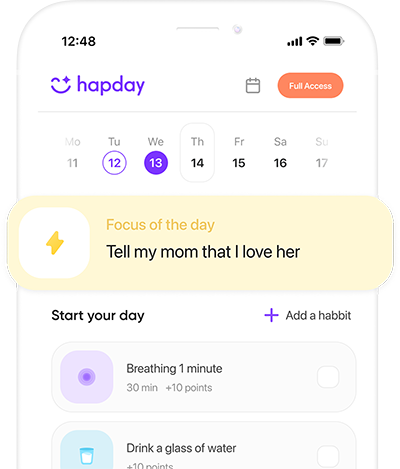Burnout isn’t just a buzzword reserved for high-stress professions or clinical circles anymore; it’s a real issue impacting people across various walks of life. Recognized by the World Health Organization (WHO) as an “occupational phenomenon,” burnout’s influence reaches far beyond the confines of the workplace, affecting our mental, emotional, and physical well-being. In this article, we’ll dig into the psychology of burnout—its causes, symptoms, and how you can rekindle your motivation and zest for life.
Table of Contents
- Understanding Burnout: It’s More Than Just Stress
- The Science Behind Burnout
- Causes of Burnout
- Recognizing the Symptoms
- The Impact of Burnout
- Strategies to Reignite Motivation
- Future Directions and Conclusion
Understanding Burnout: It’s More Than Just Stress
Many people confuse burnout with stress, but they’re quite different. Stress is having too much on your plate—too many responsibilities, too many pressures. Burnout, conversely, is defined by a lack of things—specifically, a lack of energy, enthusiasm, and effectiveness. Renowned burnout researcher Christina Maslach describes burnout in three dimensions: emotional exhaustion, depersonalization, and a reduced sense of personal achievement.
The Science Behind Burnout
Burnout often stems from chronic, unmanaged workplace stress. According to the American Psychological Association, approximately 77% of Americans exhibit physical symptoms from stress, with 33% reporting extreme levels of it. This stress, unchecked, might spiral into burnout. Neuropsychologically, burnout changes our brain’s structure and function. Studies show it affects the emotional centers, notably altering the amygdala and prefrontal cortex—regions vital for emotion regulation and decision-making.
Causes of Burnout
Burnout can arise from an interplay of factors:
- Workload and Work Environment: An overwhelming workload with little control initiates a vicious cycle. The “Journal of Occupational Health Psychology” highlights how high job demands combined with minimal job resources fuel this fire.
- Lack of Control: Feeling trapped or micromanaged only exacerbates feelings of helplessness and burnout.
- Insufficient Reward: Whether it’s financial, social, or intrinsic, when efforts seem futile or unrewarded, demotivation quickly follows. The “Frontiers in Psychology” notes the significance of effort-reward imbalance as a burnout contributor.
- Lack of Community: Human beings thrive on connection. Isolation at work, whether from the absence of camaraderie or supportive colleagues, intensifies stress and burnout risk.
- Work-life Imbalance: Without clear boundaries between work and personal life, personal relationships can sour, and burnout can loom. For instance, the Harvard Business Review found employees unable to detach are twice as likely to succumb to burnout.
Recognizing the Symptoms
Burnout can be stealthy. Its symptoms often mimic other mental health issues, so early identification is key:
- Physical Symptoms: Chronic fatigue, sleep issues, headaches, and digestive troubles might indicate burnout.
- Emotional Symptoms: Cynicism, irritability, and an increased likelihood of anxiety or depression signal trouble. The “Journal of Affective Disorders” highlights burnout’s frequent overlap with depression.
- Behavioral Symptoms: Procrastination, shirking responsibilities, and withdrawing from social interactions are common indicators.
The Impact of Burnout
Burnout leaves no stone unturned in its path, impacting personal lives by deteriorating mental health and straining relationships, and professional lives by reducing productivity. The Society for Human Resource Management estimates stress-related health issues and absenteeism cost the U.S. economy over $125 billion annually.
Strategies to Reignite Motivation
Tackling burnout involves both organizational shifts and personal efforts. Here’s how you can start reclaiming your motivation:
- Mindfulness and Meditation: Mindfulness exercises like meditation and yoga can diminish stress and enhance emotional control. Research in “Clinical Psychology Review” confirms these practices significantly alleviate burnout symptoms.
- Cognitive Behavioral Therapy (CBT): By reshaping negative thought patterns, CBT effectively reduces burnout symptoms. According to “Behaviour Research and Therapy,” CBT promotes better coping mechanisms and improved well-being.
- Time Management and Boundary Setting: Mastering time management can prevent burnout. Techniques like the Pomodoro Technique or Eisenhower Box help prioritize tasks. The “Journal of Applied Psychology” states employees with clear work-life boundaries experience less burnout.
- Social Support: Building strong networks and seeking encouragement from peers, friends, or family creates an effective buffer against burnout.
- Physical Activity: Regular exercise relieves stress. The “American Journal of Health Promotion” underscores how physical activity boosts mood and energy while reducing burnout symptoms.
- Career Coaching and Professional Development: Career coaching might realign personal values with career paths, revving up motivation and satisfaction.
- Organizational Changes: Employers should prioritize wellness, endorse flexible schedules, and promote a supportive culture, significantly reducing burnout risks.
- Self-Compassion: Being kind to oneself, acknowledging imperfections, and forgiving mistakes build resilience. “Self and Identity” research identifies self-compassion as a surprising, powerful shield against burnout.
Future Directions and Conclusion
As burnout becomes increasingly widespread, continuous research and interventions are critical. Future studies should evaluate long-term strategy effectiveness and technology’s evolving role in both exacerbating and easing burnout.
In conclusion, understanding burnout and utilizing proven strategies can help rekindle motivation and improve life’s quality. Managing burnout benefits individuals, businesses, and society, facilitating healthier, more productive environments.


This article brilliantly breaks down the complexities of burnout! It’s shocking to realize how many people are affected by it, regardless of their job. I really appreciate the focus on mindfulness and self-compassion as ways to tackle this issue. Have you guys tried any of these strategies? I’d love to hear personal experiences!
I have tried mindfulness and it really helped me! It’s amazing how just taking a few minutes each day can change your mindset.
I’m still figuring out which strategy works best for me, but I think community support is key!
Honestly, this all sounds great in theory, but implementing these strategies can be a whole different ballgame. Sometimes it feels like just adding more pressure to do better when you’re already feeling burned out.
This article highlights an essential topic that often gets overlooked! The section on recognizing symptoms is particularly important—many don’t even realize they’re suffering from burnout until it’s too late. Awareness is the first step toward recovery!
“Absolutely! We need more conversations about mental health at work to help others identify these signs early on.”
“Love this post! It’s so relatable. I find that setting boundaries really helps me manage stress at work. Anyone else feel like saying ‘no’ was a game-changer?”
“Yes! Learning to say no has been liberating for me too!”
“Totally agree! It took some time, but now my work-life balance is much better.”
I appreciate the acknowledgment of physical activity in combating burnout. Just going for a short walk during breaks significantly lifts my mood and energy levels!
Absolutely! Exercise is so underrated for mental health; it’s like a reset button!
For sure! I’ve started taking yoga classes and it has made such a difference.
The science behind burnout was fascinating; I never realized how deeply it could affect brain function until now.
This article is incredibly insightful! Burnout is a serious issue that too many people overlook. The way it breaks down the symptoms and causes really helps clarify how pervasive it can be in our lives. I appreciate the strategies shared for tackling burnout; I think mindfulness practices could be especially beneficial. Thanks for bringing attention to this important topic!
Honestly, this article feels like just another rehash of the same old advice about burnout. Sure, we all know it’s a problem, but the solutions seem overly simplistic. Mindfulness and CBT? Please. It’s not as if everyone can just meditate their way out of systemic issues at work. This seems more like a band-aid than a real solution.
The statistics in this piece are alarming yet crucial for understanding the magnitude of burnout in our society today. The fact that approximately 77% of Americans experience physical symptoms from stress highlights a growing crisis that demands attention. It’s refreshing to see an article that emphasizes research-backed strategies rather than anecdotal evidence.
While I agree that burnout is an issue, I find it hard to believe that simply changing one’s mindset or engaging in mindfulness can drastically change things. Isn’t it also about addressing workplace cultures and expectations? It feels reductive to imply individuals alone should solve these systemic problems without support from their organizations.
‘Burnout isn’t just for corporate drones anymore.’ That’s a catchy line! But let’s be real; when was the last time any of us had a break from responsibilities? Even my cat looks exhausted from watching me work! Seriously though, great insights on recognizing burnout—it’s almost like we need an official ‘burnout alert’ system.
‘Emotional exhaustion’—what a phrase! This article really dives into some heavy stuff while also offering tangible solutions. I’m particularly intrigued by the idea of cognitive behavioral therapy as a method for combatting burnout; it seems practical and evidence-based. Definitely something worth exploring further.
‘Practical and evidence-based’ sounds nice, but who has time to dive into therapy sessions when you’re already burnt out? The systems we operate in often don’t allow for personal well-being to take precedence, so maybe instead of focusing on individual solutions, we should call for systemic change!
‘Strategies to Reignite Motivation’? More like strategies to add guilt onto your already full plate! Sometimes it’s exhausting just reading about what we should do when in reality life keeps piling on stressors regardless of our best intentions.
What an uplifting read! It’s refreshing to see such comprehensive coverage on burnout—an issue many people face yet few talk about openly. The section on social support hit home; fostering strong relationships can indeed make all the difference when combating feelings of isolation at work.
Uplifting? Really? Sounds more like wishful thinking without addressing real-world complications like job insecurity and lack of resources that truly contribute to burnout.
I find it interesting how this article emphasizes individual responsibility while glossing over larger societal factors contributing to burnout such as economic inequality and job instability. Yes, personal techniques are helpful but they don’t address why many are feeling overwhelmed in the first place.
Exactly! It’s almost ironic how self-care gets marketed as the ultimate solution when true change would require rethinking workplace dynamics entirely—something far more complex than meditation apps or gym memberships!
This piece has its heart in the right place but does anyone else feel exhausted after reading about how much we need to do just not to feel burnt out? At this rate, being proactive feels like another source of stress itself!
Totally agree! It’s kind of comical how we’re told not only do we need breaks but then also have homework on self-improvement afterwards!
Yes! It’s like we’re caught in this paradox where fighting burnout means managing even more responsibilities—doesn’t quite add up!